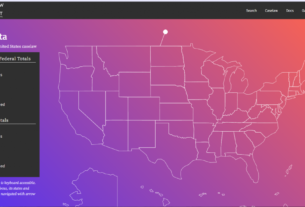If you have ever used Microsoft Visio to create a workflow diagram, you can appreciate the simplicity that a visual tool can bring to an otherwise cumbersome process. A new version being released today by Onit of Apptitude, its no-code workflow and business process automation platform, takes that idea and extends it beyond the design of the workflow to the actual creation of the workflow app.
Today’s release enhances Apptitude with a new user interface, Process Builder, that allows a user to configure business-logic workflows by dragging and dropping actions and groups of actions to wherever you want them. The new interface makes the process of building new workflows more intuitive than it was previously in Apptitude. Onit says it takes just minutes for experienced builders to learn.
After launching in 2010 as a web-based project management tool, Onit changed course in 2012 with the rollout of a line of business process applications. In the years since, it has become one of the leading providers of workflow solutions for enterprises and corporate legal departments. Its core products focus on enterprise legal management, legal spend management, matter management, and contract lifecycle management. It differentiates itself in the market through its focus on “better workflows, not better databases.”
Last year, K1 Investment Management, a Los Angeles private equity firm that specializes in investments in high-growth enterprise software companies, made a $200 million strategic investment in Onit. Shortly afterwards, cofounder and CEO Eric M. Elfman was a guest on my LawNext podcast to discuss the investment.
Also last year, it acquired SimpleLegal, a six-year-old Silicon Valley company that provides legal spend, matter and vendor management software to the mid-sized corporate legal market.
Apptitude is the platform that underlies all of Onit’s products. It makes it easier to create, modify and deploy software with workflow, transaction management and reporting capabilities. While Onit uses the platform to create its own products, many of its strategic partners and customers also use it to create apps of their own. Onit says that more than 5,500 apps have been built and deployed using Apptitude.
Onit says that Apptitude supports the creation of an unlimited number of apps, from ones that are department-specific — such as legal spend management, legal holds and legal service requests — to solutions shared across departments — such as compliance, finance, human resources, risk management, IT, marketing, operations and procurement.
Drag-and-Drop Interface
During a demonstration of the new user interface yesterday, CEO Elfman and Wesley Dubay, senior sales engineer, showed how they use the new drag-and-drop functionality to build a workflow around a real-world scenario requested by a customer.
By dragging and placing blocks to define business rules, actions and conditions, they were able to design and produce the app in a matter of minutes, creating a simple business process that could assemble and generate different kinds of documents based on different conditions and send notifications to the appropriate people.
Apptitude comes with more than 200 prebuilt workflow actions to create automated workflows, routines and integrations. Prebuilt actions include base codes that require no code to configure into workflows and apps.
Elfman said the new interface was motivated by the increasing complexity of workflows his customers face and their need to build solutions more quickly than ever before. Whereas Onit’s development of Apptitude had previously focused on end-user functions, he said, the company decided with this release to focus on the building process itself and to make that knowledge part of the platform.
By simplifying the creation of workflows, Onit says, this new version of Apptitude bridges the gap between technical and business users. While this does not mean that lawyers will be logging in and creating workflow apps, Elfman said, it does lower the bar with regard to the skills needed to develop an app using the platform.
Onit also provides training and certification in working with Apptitude or with its ELM and CLM products.
Because the new interface is built over the same core platform, it can be used with any apps previously built using Apptitude, so no migration or changes are required. In fact, Dubay said, the visual depiction can help users debug problems with prior apps.
It can also be used as part of an agile build process to show the design to other stakeholders and get their input.
This new version of Apptitude is available now.
Free Business Continuity Apps
In related news, Onit has responded to the COVID-19 pandemic by offering a set of free business continuity apps. The apps are available both to Onit customers and those who are not customers. The apps address four business needs:
- Managing a remote workforce, with apps for work from home transition and business standup/situation reporting.
- Overseeing business changes, with apps for work delegation and client-change tracking.
- Mitigating company risk, with apps for COVID-19 exposure self-reporting and return-to-work risk assessment.
- Managing financial impacts, with apps for financial impact tracking and force majeure clause review.
Additionally, Onit has created an online learning program, Lean into LegalOps, which offers classes, case studies and other resources.
LawNext Episode 27: Founder Eric Elfman On Onit’s $200M Investment

